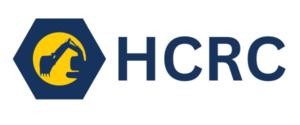Onboarding is sometimes known as organizational socialization, and simply put, it refers to the process or plan whereby new employees are welcomed into a company and introduced to those things which make the company unique – its expectations for employees, knowledge base, expertise, and culture. An effective onboarding plan doesn’t begin or stop with a new hire’s first few days, however. It begins with recruitment, and continues throughout the duration of an employee’s tenure. In this way, it serves two purposes: to bring new employees into the fold, and to keep them there.
There are no second chances at first impressions. You want a potential candidate to want to work for you from the moment they see or hear of a job opening with your company. Once hired, you want them to be glad they accepted the job, and to strive to be productive, loyal and committed employees.
Develop a Formal and Consistent Plan That Begins With Recruitment
Be prepared throughout the hiring process to answer any questions that candidates applying for an open position with your company might have, either about the job in particular or about the company in general. From the moment you begin receiving applications and responding to qualified candidates, keep them informed of where things stand and what they can expect next. Doing so will convey the message that your company is an open, supportive and well-organized place to work. Once you select a candidate, make an offer and they accept it, don’t assume you can just sit back and wait for them to show up for work in two, three, or six weeks’ time. Check in with them frequently right up until their start date.

Get the necessary paperwork out of the way as soon as possible, preferably before their first day of work. This allows them to feel prepared when they show up for their first day of work, and to know that they will be able to focus on getting started in their new position. Be clear about what training will be required and how/when it will be integrated into their schedule. Ensure they have received a copy of the company’s mission statement and an organizational chart, and that someone has discussed with them in depth what their position will entail, including objectives and responsibilities. Make it known what you expect from them, not just in terms of what their duties will be, but about company policy, dress code, hours worked, and any tools or gear they will need to supply.
Some Ways to Make the New Hire Feel Welcome and Appreciated:
1. Have a “welcome package” waiting for them on their first day of work. This might contain such items as their company badge, keys, business cards, email address, and laptop computer or company cell phone. If they will be driving a company car, have it ready for them. You might include some amenities bearing the company logo, such as pens, a coffee cup, a hat, briefcase, a bottle of wine, some fruit, or even chocolates.
2. Have their supervisor introduce the new hire personally to the people they will be working closely with, and send out a companywide email introducing them to the rest of the employees.
3. Within the first few days if possible, orchestrate a lunch for the employee wherein they can casually meet and converse with their co-workers and/or members of specific departments they will be interacting with on a regular basis. Let this be an informal social gathering, where they can begin to make personal connections as well as get a feel for who they will want to go to with specific questions or concerns in the course of their work day.
4. Assign a mentor (or simply a peer who has been there for some time) to the new employee who can answer questions as they arise and provide some important guidance in the early stages of the job when they will almost certainly encounter challenges, some of which they may not be expecting.

5. If you haven’t done so already, lay out clear and specific expectations on job performance, how to achieve pay raises, and what is required to be promoted. Let them know they will be given regular feedback on their performance, and that they can always ask questions if they are unsure about how to perform a particular task.
6. Incorporate them into a team from the get-go, and have small tasks they can get started on immediately that will help them to gradually feel comfortable in their new position (rather than expecting them to observe others.) As soon as possible, get them involved in bigger projects.
Effective Onboarding Will Lead to Retention
It’s expensive to lose a good employee. The cost of recruiting, interviewing, hiring, and training new employees is high not only in terms of dollars spent, but also in terms of time and effort. Furthermore, when an employee quits, you not only have the costs of rehiring and training a new person to take their place, but you have to contend with decreased productivity while the position is vacant. There may also be some collateral damage in the form of diminished morale among those affected by their departure. If you can keep your employees longer, you reduce these costs.
When it comes to retention, effective onboarding is the foundation. Once an employee has been with you for a while, it’s easy to take their continued presence for granted; don’t make this mistake. Discuss a career development plan with them around when they’re hired, including short and long-term goals, and check in with them about it on a regular basis. Set up periodic meetings between the employee and their supervisor to discuss how things are going, any problems they are experiencing, what they could use help with, what is going right or wrong, and so forth.
Be sure you are paying competitively, and give raises when warranted and possible. Think big picture. The same applies for benefits and “perks” like gym memberships, gift certificates, etc. Appreciation encourages loyalty.
Give your employees the tools they need to do their job well. This pertains to equipment, technology, and training. The easier you make their jobs to actually do, the happier and more productive they are likely to be.
Not only is it costly to keep replacing employees, but a company with a high retention rate is going to be seen by prospective employees as a desirable place to work, while a company with high turnover is more likely to be seen as problematic at best, and at worst, apt to be shunned by expert talent looking for a new home. In the tight labor market of today, can your company afford to let the best get away? Your employees are your most valuable asset. As such, you need a comprehensive onboarding plan to first acquire the best talent you can, and then hold on to them.






